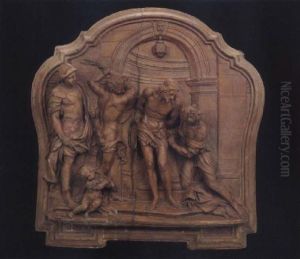Ignazio Marabitti Paintings
Ignazio Marabitti was a prominent Sicilian sculptor of the late Baroque and early Neoclassical periods. Born in 1719 in Palermo, Sicily, which was then part of the Kingdom of Sicily, Marabitti was raised in an era when the Baroque style was flourishing in Italy and across Europe. Despite the lack of extensive documentation on his early life and training, it is believed that he studied under some of the leading artists of his time in Sicily, including the renowned sculptor Giovanni Battista Ragusa.
Marabitti's career began to gain momentum in the 1740s and 1750s when he started receiving commissions for religious and secular sculptures. His work is characterized by its dynamic forms, graceful figures, and expressive faces, which reflect the transition from the theatrical drama of the Baroque to the more restrained elegance of Neoclassicism. His sculptures often exhibit a mastery of marble carving, with a particular attention to the rendering of human anatomy and drapery.
One of Marabitti's most famous works is the 'Triumph of the Virgin' or 'The Assumption of the Virgin', located in the Church of San Domenico in Palermo. This masterpiece showcases his ability to create complex compositions with multiple figures that interact with each other in a cohesive narrative. Marabitti's sculptures can be found in various churches and public spaces throughout Sicily, contributing significantly to the region's artistic heritage.
Throughout his career, Marabitti's reputation grew, and he was considered one of the leading sculptors in Sicily. His influence extended beyond his lifetime, as his approach to sculpture paved the way for the next generation of artists who would further develop the Neoclassical style. He continued to work and receive important commissions until his death in 1797 in Palermo. Today, Marabitti is remembered as a key figure in the Sicilian art scene of the 18th century, and his works continue to be admired for their beauty and technical prowess.
